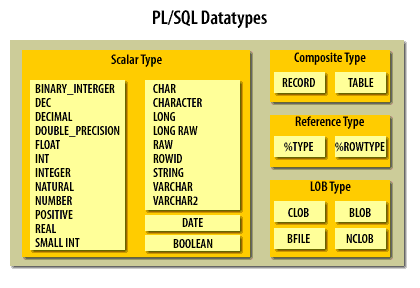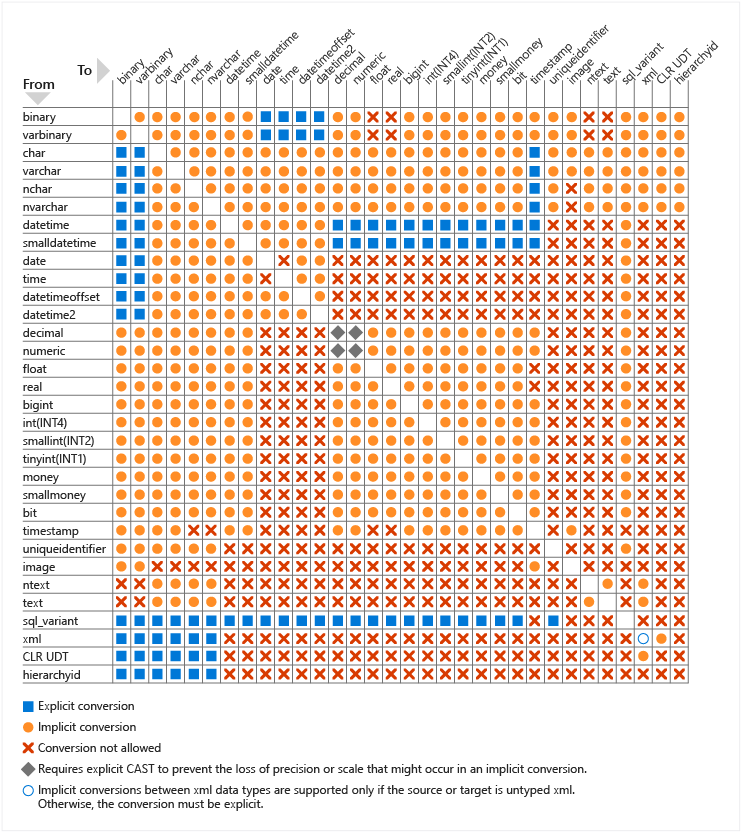

- #Sql datatype for an icollections how to#
- #Sql datatype for an icollections generator#
- #Sql datatype for an icollections full#
- #Sql datatype for an icollections free#
Now that you have a table and a class in which to put each row of data from the table, let's look at various ways to load up the collection of objects. Public Property IsDiscontinued As Boolean Public Property IntroductionDate As DateTime Listing 1: A product class with one property per column from the Product table C# That way, you won't have to worry about overwriting these additional elements if you regenerate the code. You can create another file with the other part of the Product class and add any additional properties or methods you want there.
#Sql datatype for an icollections generator#
Marking a class as partial gives you the flexibility to use a code generator to create this class and if you change the schema of your table, you can regenerate the class. You might also notice that I marked this class as partial.
#Sql datatype for an icollections free#
Feel free to add a private variable and then use a complete property get/set to return and set the value of the private variable, if you want.
#Sql datatype for an icollections full#
In this first sample, you use public properties instead of a full property definition. The Product class, shown in Listing 1, is an example of creating a class that matches each column in the Product table. The product data repeats, but I wanted to have enough data so I could perform timings to show the differences between the various methods that I present in this article. In the sample code that comes with this article, you'll find a file named Product.sql that contains this table definition and also loads this table with over 6200 rows of data. You'll need a little bit of code (in the snippet) to create the T-SQL definition of the product table shown in Figure 1 and Figure 2. When you read the data from the Product table, you create an instance of the Product class for each row in the table, as shown in Figure 2.įigure 2: Read data from SQL Server and put it into a collection of objects in.

NET data type for the SQL Server data type.įigure 1: For each table in SQL Server, you create a corresponding class in. You create each property with the appropriate.

In Figure 1, you can see the definition of a Product table and the corresponding Product class created in C#. You need to create a property in C# or Visual Basic for each column defined in your table to build an entity class. Build an Entity ClassĪn “entity class” is a class most often used to represent the values from a single row of a database table. NET 1.0, so that is always a stable choice. Using ADO.NET for data access and building classes with properties and methods has not changed since.
#Sql datatype for an icollections how to#
If you know how to build your own object collections using tried and true technology, you don't have to rely on Microsoft. I think it is important to understand what these code generators do becausethe more you know, the better programmer you are. You can use LINQ to SQL or the Entity Framework to generate code that creates these collections of objects for you. This means you need a collection of objects. Most likely, you are not just reading a single row of data all the time, but instead are retrieving many rows of data. When you use a class, you can inherit from a base class to add extra properties and functionality to each class. This is just not possible with a DataRow or with a data reader. Using a class makes it easy to control the serialization of the class data because you can add attributes to each column. With a class, you get strong typing of data values where all values coming from a DataRow or a data reader are exposed as the object data type. If you mistype the column name when using a DataRow, you get a runtime error, unlike mistyping a property name on a class, which earns you a compile-time error. For instance, when using a DataRow, you must remember the column name in your class, you get IntelliSense on the property name. There are many reasons for using a class. There are many ways of getting this data, but how you work with the data within your program should be done with a class. We all retrieve data from a table at some time or another. Finally, you will learn the use of nullable and non-nullable data types and how to use reflection to fill your collections. You will then see how to use a DataReader to fill the same collection of objects and how to use LINQ to iterate over a DataTable to build your entity collection. In this article, you will learn to use a DataTable to fill a collection of objects. The reasons for using collections are many and are explored in this article. You should also be using collections of objects instead of using a Data Reader, a DataSet, or a DataTable in your applications. Almost every programmer knows (unless you have been living under a rock for the last five years or so) that you should be using classes for all of your programming.


 0 kommentar(er)
0 kommentar(er)
